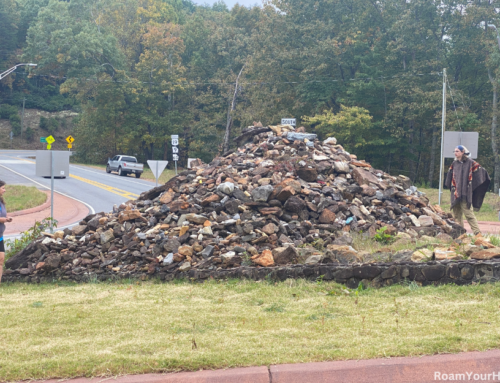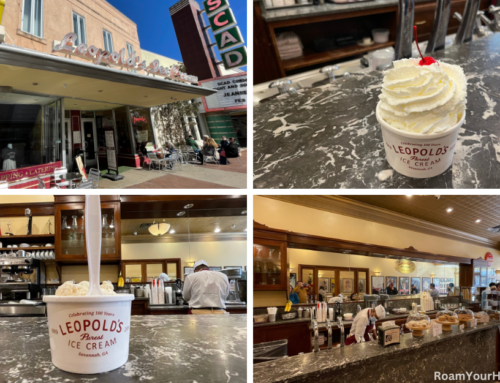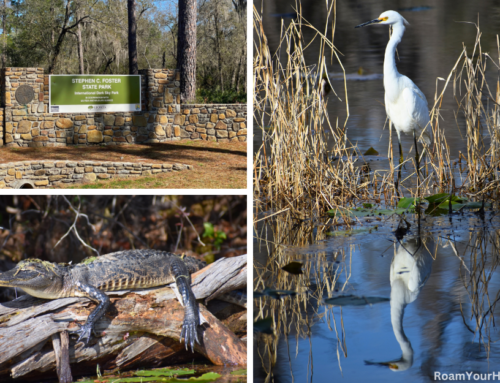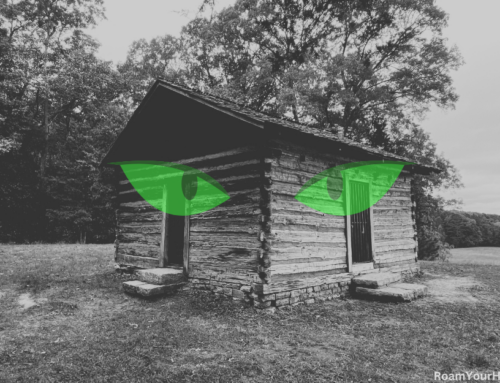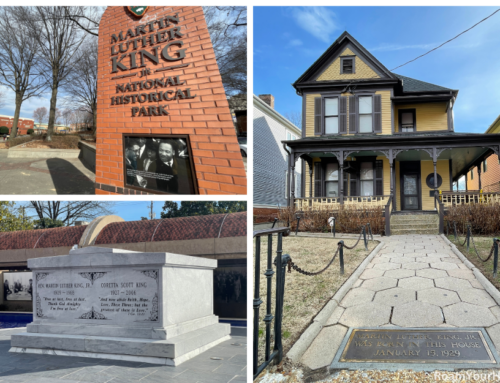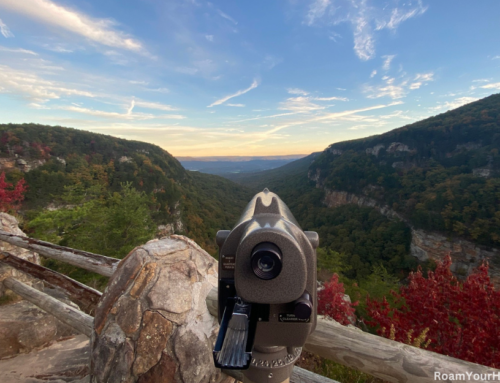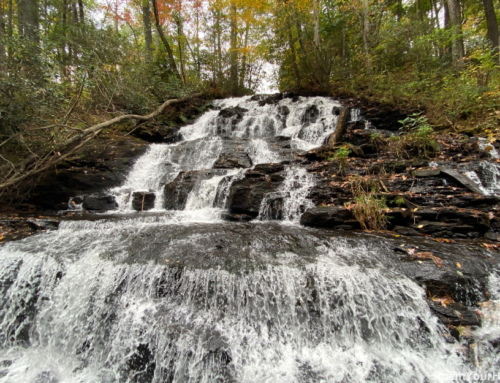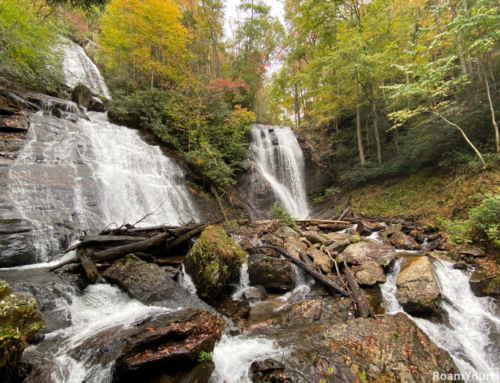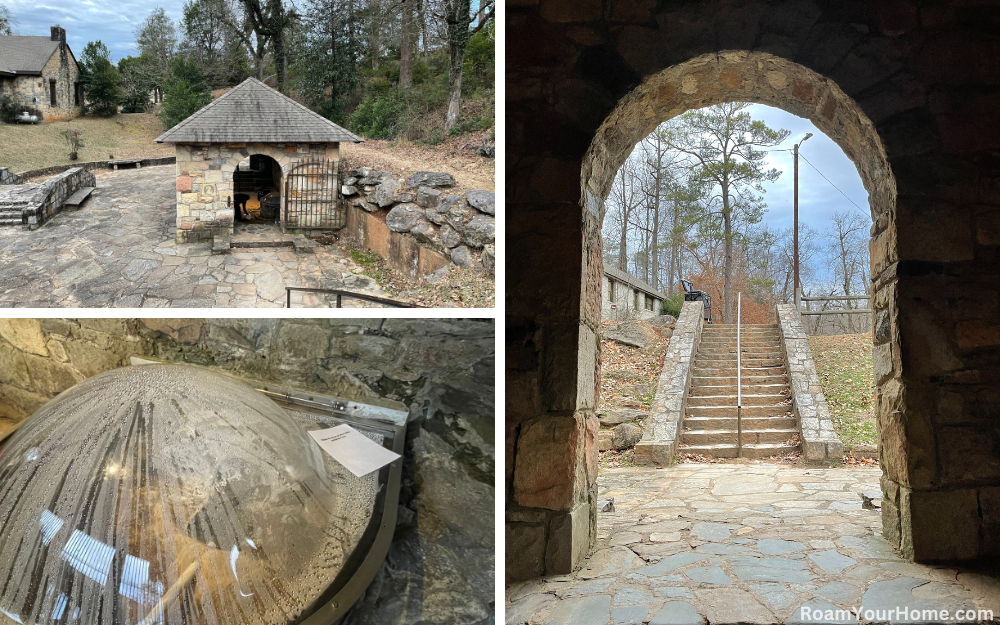
Indian Springs State Park: Drink the mythical healing waters
Drink up! Indian Springs State Park is located southeast of Atlanta and northwest of Macon, Georgia. The park has many things to do, but the natural springs are the star attraction, as it’s been for hundreds of years.
The water at Indian Springs picks up minerals from the ground and has a distinct Sulphur taste. To this day, thousands of people visit the spring each year to fill jugs, believing in homeopathic qualities.
Early History of Indian Springs
The park gets its name from the Muscogee or Creek Indians. The tribe has used the springs for centuries to cure injuries or help heal the sick. The Muscogee frequented Indian Springs for centuries before European arrival. After the Creek Wars of 1813-14, the tribe faced pressure that ultimately resulted in them ceding 22 million acres of land in Alabama and Georgia to the United States. The Treaty of Washington in 1826 surrendered all tribal lands in Georgia to the state, including Indian Springs.
Seeing value in the springs, the government of Georgia protected “Land Lot #1”, which was the area surrounding the springs. This area was set aside in perpetuity to be used for public recreation. At about 200 years old, Georgia State Parks claim Indian Springs is the oldest state-owned recreation area in the county.
Over the years, many hotels and tourist traps have been near the springs. Most of which have long burned or been torn down. One of interest still remains. The Indian Springs Hotel and Museum was built in 1823 and is still standing and operational to this day. The hotel was built by Lower Muscogee Chief William McIntosh, who deeded several hundred acres of land after signing the First Treaty of Indian Springs in 1821. It was this profiteering and signing of additional treaties that would ultimately lead to his death by his own people. His hotel would remain.
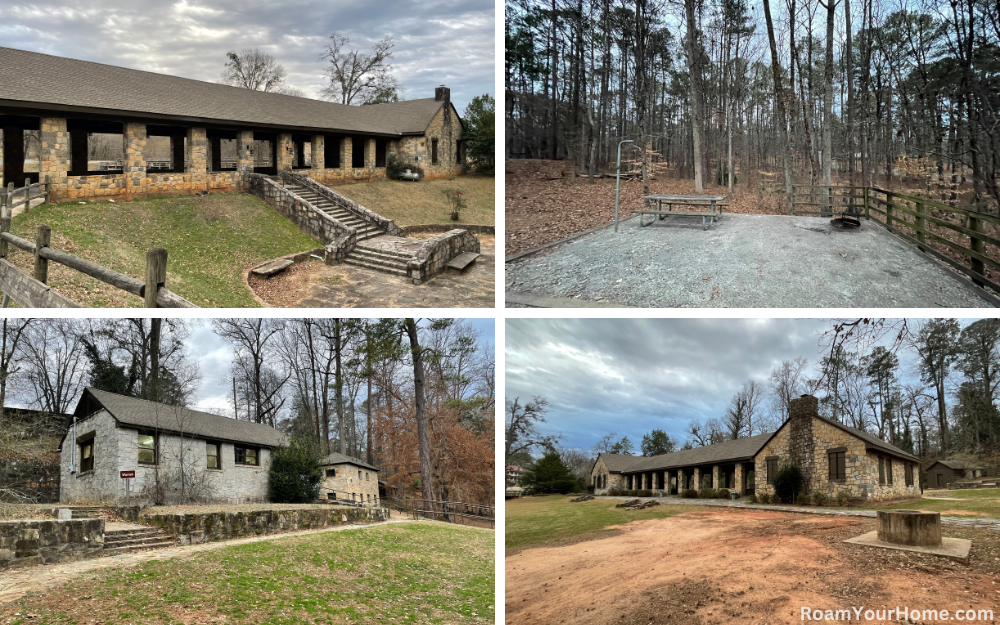
Establishing the State Park
Indian Springs became Geoirgia’s first state park in 1927. When the Great Depression hit, President Roosevelt’s Civilian Conservation Corps, or CCC, was sent to make improvements to the park. The CCC “boys,” as they were known, are responsible for much of the infrastructure you see in the park today, including the stone structure surrounding the spring.
Visiting Indian Springs State Park
I visited Indian Springs State Park in mid-January. I arrived late and pulled into the nearly empty campground just before sundown. After pitching my tent and making a quick snack, I hit the hay, ready to start early the following morning.
Before sunrise the next day, I’d had breakfast, broke camp, and enjoyed my second cup of coffee. As the sun started to warm the sky, I drove to the Spring House, a short distance away. Given the empty campground, I wholeheartedly expected to be the only person at the springs that morning. To my surprise, when I pulled up, a half dozen cars were already in the parking lot.
I got out of my car armed with four empty water bottles. I saw the stone spring house in the distance and headed in that direction. Walking down the steps to spring, I was greeted by a crowd inside. “Welcome,” they all said in near unison. “Howdy,” I quickly responded. The spring house was small. No bigger than a bedroom. It did not have doors but had heavy metal gates that rangers closed at night and opened early. The spring was protected by a stone and metal ring with a rising thick, clear plastic cover. You could barely make out the spring because of the condensed fog on the cover. A spigot protruding out of it allowed people to fill their jugs with natural mineral water. The cover did not protect against the smell. A mineral stench was in the air.
Healing Power of the Water
Eight people huddled inside, patiently waiting their turn to fill water bottles. Walking to the spring, taking four bottles might be excessive, I thought to myself. I was wrong. Each person there had giant empty jugs. Some had dozens of them. “Where are you from?” an elderly woman with a thick southern drawl said to me. “Well, I live in Pennsylvania, but my job takes me everywhere. My wife and I are down here visiting Georgia on vacation.” Looking at her sitting, I saw a walker beside her. “So I’ve heard this water has medical qualities. Is that true?” “Oh, my yes. I drink a glass every day. It helps keep my joints lubricated. I can tell when I go a few days without having any of it. I get stiff and have even more trouble walking.” she said.
A chorus followed. “Absolutely.” “Helps keep my gout from flaring up.” “I come here once a week to fill up my bottles and get some for my mom, too. She is 103 years old and still drinks it.” I laughed out loud. “Wow, that is quite the ringing endorsement from everyone.”
One lady was filling her last bottle and said, “You only have a few small bottles. Why don’t you get in here and fill those up right quick, so you’re not waitin around for all of us.”
“Does anybody care if I cut the line?” I asked. “Not at all. You go right ahead.” After filling up my bottles, I took the cap of one. “Cheers,” taking a big gulp. “Wow,” I gasped. “That certainly tastes like it smells… not very good.” “Tastes like shit, but that just means it works.” a man sitting on the corner said to me. I laughed again and thanked everyone for their hospitality.
Heading back to my car, I was not sure if it was healing water or not. But with centuries of believers, it certainly could not hurt to drink a little here and there.

